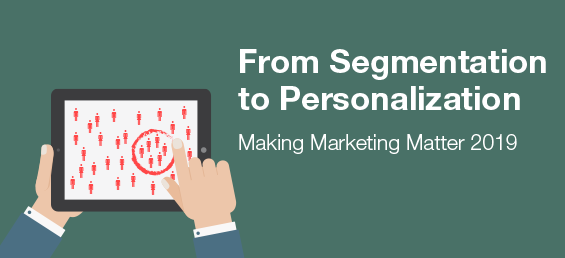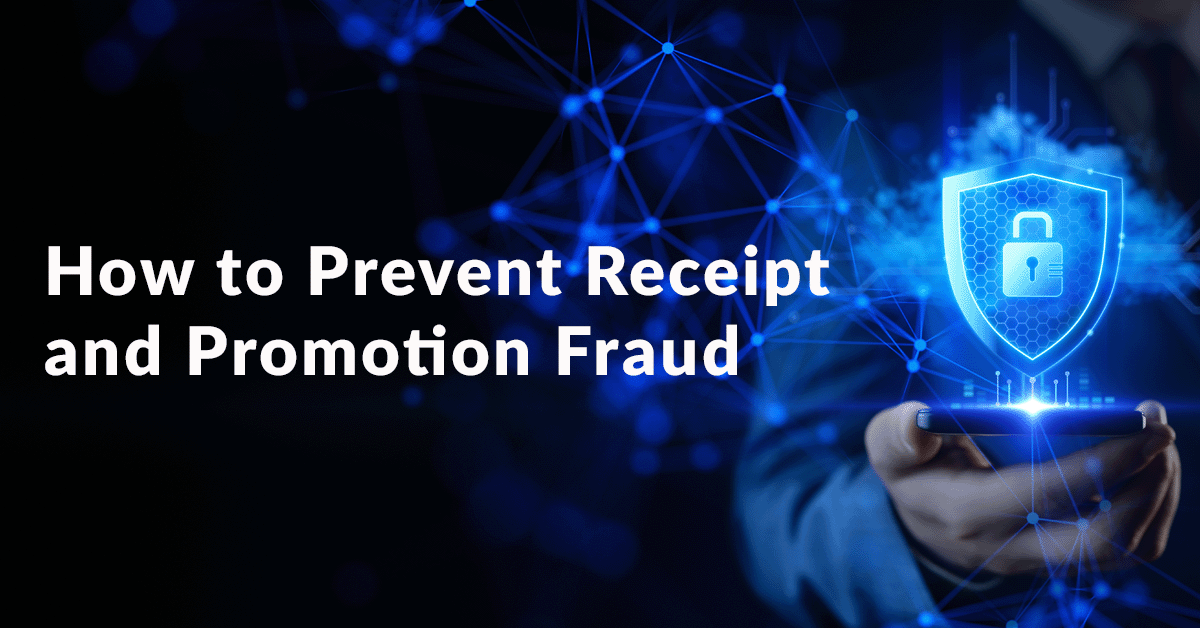Fostering brand loyalty is the end goal of all marketing efforts. Keeping customers coming back to your brand — despite the dizzying array of options open to them — comes down to treating each customer as a valued individual, with their own unique behaviors and personal preferences. While this may have seemed a tall order in the past, nowadays, technology makes this kind of intimate relationship not only possible… but expected.
With Netflix and Amazon offering up highly customized recommendations based on every historical interaction with their platforms, customers today anticipate the same level of familiarity from other services. In this era of relevance, it is incumbent on brands to go the extra mile in order to understand their customers and tailor offers to their specific needs. This is where data-based segmentation and advances in personalization technology come into play. In order to help our brand and agency partners get up to speed on where segmentation and personalization are expected to lead marketing in 2019 and beyond, we’ve put together a primer on the key trends to follow.
KEY STATS
Personalization can foster loyalty and alter buyer behavior:
- 91% of consumers are more likely to shop with brands that recognize, remember, and provide them with relevant offers and recommendations
- 53% of Millennial and Gen X shoppers say personalization would help a brand earn their loyalty
- Nearly 50% of customers say they’ve left a brand to which they were loyal to go to a competitor that is better at meeting their needs.
- 48% of consumers have left a brand’s website and purchased from a competitor due to a poorly personalized experience
Customers are willing to trade their personal data in expectation of personalized offers:
- 67% of Millennial and Gen X shoppers would give retailers and brands more information about themselves to gain access to a more personalized shopping experience
- 62% of consumers expect companies to send personalized offers or discounts based on items they’ve already purchased
- 90% of consumers are okay with brands knowing more about them if it helps deliver a more rewarding and satisfying shopping experience
Brands are making personalization a marketing and digital priority:
- 94% percent of marketers are focusing on data analytics, personalization technologies and customer profile management to deliver personalized customer experiences
- 75% of enterprises using personalization technologies like AI and machine learning report enhanced customer satisfaction by more than 10%
- 84% of marketing organizations have been implementing or expanding AI and machine learning towards marketing efforts
FROM SEGMENTATION TO PERSONALIZATION: The Marketer’s Journey
Segmentation and Personalization are often used interchangeably, since both attempt to customize an individual’s experience with a brand. But while segmentation involves grouping customers into smaller buckets in order to extract certain similarities, personalization is all about the individual. It doesn’t matter what segment they belong to because messages are being tailored just to them.
Using segmentation, a brand might divide its customer database by gender and age, so that each segment would receive a promotional message with broadly relevant offers. This basic level of segmentation, however, is not sufficient anymore – which is why many brands use data analytics to create ‘micro-segments’ based on attributes like lifestyle, interests, attitudes, purchase behavior, search behavior, buyer stage and much more. Marketers can then design experiences that are more highly relevant to customers in each micro-segment.
With personalization, advanced analytics can go beyond even micro-segments to create individual customer data hubs that integrate every interaction — across all touchpoints — so that the content of a promotional message would be tailored to the individual customer’s unique profile, and would be specifically relevant to them.
Although it may seem like brands could simply skip to the good stuff, and focus entirely on personalization initiatives, the reality is that marketers need both. It’s necessary to start with segmentation because it helps identify the different types of customers to target – for example, new customers versus established customers, or happy customers versus customers that need additional nurturing – based on their order frequency, order value and purchase history for example. Customer segmentation also provides useful data that can help structure a loyalty program to ensure the widest benefits to members. Ultimately, however, in order to drive up customer engagement and loyalty, brands have to explore personalization initiatives like these:
- Home cycling brand Peloton analyzes its customer database to determine the ideal length of new fitness videos to create, and to make personalized ride recommendations to users
- Language app Duolingo tracks customer behavior to send daily personalized email reminders to practice, helping users make the most of the program and find value in the app.
KEY TRENDS
When it Comes to Segmentation, Behavior Matters More than Demographics: Categorizing people by generation – Millennial, Gen X, Gen Z – only tells us so much about them, especially since the age ranges can be extremely broad. In this age of hyper relevance, targeting using such broad demographic parameters no longer suffices. In response, the Boston Consulting Group has segmented US millennials into 6 distinct groups based on their attitudes and behaviors, from ‘Hip-ennials’ to ‘Anti-Millennials’. Another behavioral segmentation is used by Netflix, which targets people by taste based on their viewing preferences. Amazon does the same with products, and YouTube with video, in order to offer up customers relevant content, regardless of what a demographic categorization would have prompted.
Brands Are Already Aiming for ‘Hyper personalization’ or Individualization: Hyper-personalization leverages Big Data to deliver a tailor-made experience in real time to perfectly match a customer’s immediate need. For example, a customer shopping online would receive offers related to their browsing history, real-time special prices for items they may have left in their shopping cart, or recommendations based on items bought in physical store locations and every other touchpoint. Such hyper-personalization relies on the right mix of technology and infrastructure, including implementing multichannel options that store customer information across all online and offline channels, enabling shoppers to have a seamless shopping experience regardless of which touchpoint they choose to use.
- UK retailer Sainsbury’s adopted a hyper-personalization campaign to deliver relevant messaging to customers as they shopped. Micro-location data was used to recognize when a customer was outside, entering or walking around a store to trigger offers. Time and store data made sure that offers were appropriate to the time of day and to current store inventory. It could also identify customers shopping at a competitor store to email them a win-back offer to Sainsbury’s. 51% of customers said the campaign made them more likely to shop at Sainsbury’s, and 96% said they would like it to continue
The Rise Of Zero-Party Data: The data scandals of the past few years have prompted a new age of privacy. Consumers increasingly want brands to require consent before using personal data for targeted marketing by a 2:1 margin. Traditional personalization strategies rely on compiling a data-heavy personal profile of a customer that includes their purchase behavior, click-stream paths, search terms, and other indicators to understand their requirements. But in this era of distrust, ‘zero-party data’ which keeps ownership of this kind of data in the hands of the customer, is gaining prominence. The onus will therefore be on brands to provide real value to consumers in order to encourage them to willingly part with their data.
AI and Machine Learning Will Democratize Personalization: Cost and technical barriers to personalization are lower than ever, making it available not just to brand behemoths like Netflix and Amazon. Artificial intelligence – and in particular, machine learning – has changed the game for marketers in recent years. Digital platforms powered by AI take on the burden of complex data analysis with ease, and by being able to process such vast amounts of data in real-time, these technologies facilitate the creation and analysis of customer segments so diverse and narrow that they effectively become individualized: the holy grail of personalization.
- Media giant Sky is going beyond a simple recommendation engine for content by targeting customers’ moods. Using machine learning to extract intelligence from customers’ viewing and device data, Sky is looking to serve content according to a user’s mood at the time, instead of simply what they have watched recently.
An Alexa (or Siri) For Every Website: Natural language processing (NLP) has enabled search engines like Google to track what type of content consumers are most interested in, and to create contextual results based on their location and previous search history. It also informs chatbots and AI-based assistants like Alexa and Siri. In the coming years, progress is also expected in Natural Language Generation (NLG), and in the field of automated content generation. More and more websites are using automatic text generation to provide targeted content, and NLG can similarly be put to use by marketers to provide more dynamic, personalized promotional content tailored to each individual. Using these tools, online retailers can easily adapt content in real-time, and update their catalogs to respond to the latest sales data or to promote last-minute or seasonal campaigns.
KEY ISSUES
While most brands have already adopted some basic level of personalized marketing, the reality is that personalizing at scale is a huge challenge, especially for businesses that cater to large volumes of customers. Some of these challenges include:
Data Is A Huge Pain Point: in an ideal world, marketers would be able to simply pull up a unified customer profile, one that compiled data from every conceivable touchpoint (online, mobile and physical), and be certain that the profile would be absolutely up-to-the moment. But poor data quality and lack of integration often get in the way of personalization efforts. Marketers are housing their customer data, on average, in four different systems, making it incredibly difficult to deploy personalized experiences across channels.
There’s A Significant Digital Trust Deficit: Digital trust remains a critical barrier to enabling personalized experiences. With the EU General Data Protection Regulation (GDPR) now in play, as well as similar legislation like California’s Data Privacy Law, harvesting personal data has a whole new set of challenges. These developments mean the future of personalization will be based on trust, and for that, businesses have some ways to go in convincing their customers:
- U.S. consumers worry about how brands collect and use their personal data, and 34% don’t trust tech companies with their digital privacy
- Only 18% believe businesses treat people’s personal data in an honest and transparent way
Building digital trust is the biggest challenge to achieving personalization. It’s critical that companies have strong data security and privacy measures in place, that they give customers full control over their data, and that they are transparent with how they use such data.
There’s a Fine Line Between Convenient and Creepy: As technologies such as artificial intelligence, machine learning and digital assistants become more sophisticated and mainstream, consumers are beginning to experience a level of… let’s say intimacy… with brands that they’re still getting used to. While personalization works well in some arenas, like recommendation engines, in other channels it can feel downright creepy if not done in the right way. According to Accenture, consumers can be very vocal about the difference:
- 41% of consumers find it creepy when they receive a text from a brand or retailer as they walk by a physical store
- 35% percent find it creepy when they get ads on social sites for items they’ve browsed on a brand’s website
RECOMMENDATIONS:
Start with the Basics: According to Evergage, most marketers (77%) use email for personalization efforts over other channels. Why? For one, it’s a good place to begin developing personalization tech, but it also works! 67% of Millennial and Gen X shoppers say they enjoy email reminders from brands and retailers that highlight previously viewed products, and may also contain special offers. By starting with email, marketers can begin to create micro-segments based on customers’ click and open patterns, and, by updating this data constantly, these micro-segments can develop a high level of granularity. Eventually, AI can be leveraged to create actionable insights, and to send out targeted and personalized marketing messages.
Build a Solid Feedback loop: As marketing becomes more and more customer focused, understanding what customers respond to (and what they don’t!) is vital. Brands need to learn the importance of feedback, so that this data can continue to inform the company of what works and what doesn’t. By asking shoppers for their opinions and preferences, and curating the right products for them via trial and error, a brand can build a personalized experience over time — which builds customer loyalty.
- Online retailer Stitch Fix asks their customers a series of questions to understand their style preferences prior to delivering hand-selected items to their homes. Stylists use information on what they choose to keep, and what they choose to return in order to better understand customer preferences and improve their recommendations over time.
Make Interactions Friction-Free: Today’s consumers expect, if not a truly personalized experience, then at the very least a frictionless, effortless one across all channels and touch points. Everyone’s familiar with the ease of ordering via amazon and are accustomed to one-touch service delivery. Customers want such ease from all their interactions with brands, whether via mobile, website or an app. Those that require one more step than necessary will find themselves falling behind.
- Yves Saint Laurent integrated Snipp’s receipt validation technology into their ongoing loyalty program to ease the process of points redemption. Consumers simply upload their receipts through the YSL loyalty site, which Snipp validates via its SnippCheck API, making it seamless and simple for consumers to earn points for purchase.
- Snipp developed a similar solution for Clinique, where its loyalty program members could earn rewards points on purchases by simply uploaded their receipts. Snipp’s API then awards loyalty points via an integration with the website.
Invest in Loyalty Programs to Engage Customers: Brands need to invest in creating a unified data view of customers across all channels, in-store or online, mobile or social. But 55% of marketers don’t feel they have sufficient data and insights for effective personalization. Retailers now have to compete for a customer’s data by making their experiences as personal and enjoyable as possible. Loyalty programs can be a useful mechanism for this, because not only do they encourage consumers to willingly share their information, they go a long way towards fostering a long term emotional connection between brand and consumer.
- Consumers with an emotional connection to a brand have a 306% higher lifetime value
- 77% of consumers say loyalty programs make them more likely to stay with brands
- 87% of loyalty program members say they are open to sharing private data in order to receive access to personalized rewards or engagements
- Bavarian Inn needed to build an enhanced customer experience, glean data from separate locations, and identify and incentivize high performing guests. Snipp guided the evolution of Bavarian Inn’s loyalty program, “Bavarian Inn Perks Club”, which integrated 3 different POS into one platform, and automated previously manual processes for both Bavarian Inn and its customers. Bavarian Inn Perks Club also leverages SnippCheck, allowing members to earn points simply by uploading their receipt at the point of purchase.
- f’real foods leveraged SnippLoyalty Enhanced to create “f’real perks”, a mobile-first loyalty program powered by a core receipt processing engine. Consumers simply submit their purchase receipts to earn points, and they can also earn even more with engagements such as registration, profile updates, login activities, watching videos, and social sharing.
References:
https://newsroom.accenture.com/news/widening-gap-between-consumer-expectations-and-reality-in-personalization-signals-warning-for-brands-accenture-interactive-research-finds.htm
http://retailmenot.mediaroom.com/2018-06-05-Household-Enthusiasts-The-Shopper-Retailers-Cant-Afford-to-Ignore
https://inmoment.wpengine.com/blog/earning-and-destroying-customer-loyalty-retail-cx-trends-you-need-to-know/
https://www.marketingdive.com/news/state-of-marketing-personalization-is-getting-worse-accenture-finds/522806/
http://retailmenot.mediaroom.com/2018-06-05-Household-Enthusiasts-The-Shopper-Retailers-Cant-Afford-to-Ignore
https://econsultancy.com/12-stats-that-prove-why-personalisation-is-so-important/
https://www.episerver.com/about/news/press-room/pressreleases/study-nine-in-10-consumers-are-comfortable-with-brands-knowing-more-about-them-to-get-a-better-online-shopping-experience/
https://martechtoday.com/new-era-personalization-hyper-connected-customer-experience-209529/amp
https://www.forbes.com/sites/louiscolumbus/2018/02/25/10-ways-machine-learning-is-revolutionizing-marketing/#3f6343955bb6
https://www.forbes.com/sites/louiscolumbus/2018/02/25/10-ways-machine-learning-is-revolutionizing-marketing/#5be0fb865bb6
https://martechtoday.com/new-era-personalization-hyper-connected-customer-experience-209529/amp
https://www.forbes.com/sites/louiscolumbus/2018/02/25/10-ways-machine-learning-is-revolutionizing-marketing/#3f6343955bb6
https://www.forbes.com/sites/louiscolumbus/2018/02/25/10-ways-machine-learning-is-revolutionizing-marketing/#5be0fb865bb6
https://www.pure360.com/segmentation-vs-personalisation/
https://www.towerdata.com/blog/email-marketing-personalization-brand-experience
https://www.businessinsider.com/ai-marketing-report-2018-3?IR=T
https://www.bcg.com/en-in/publications/2012/millennial-consumer.aspx
https://www.businessinsider.com/ai-marketing-report-2018-3?IR=T https://www.capgemini.com/consulting-fr/wp-content/uploads/sites/31/2017/08/hyperpersonnalisation_vs_segmentation_english_05-01-2017.pdf
https://www.marketingweek.com/2018/11/23/sainsburys-marketing-ultra-personlised/
https://globenewswire.com/news-release/2018/05/14/1501640/0/en/New-Survey-Reveals-Consumer-Conflict-between-Privacy-and-Personalization.html
https://www.wayin.com/resources/forrester-report-predictions-2019/
https://www.wayin.com/blog/2019-digital-marketing-predictions/
https://www.computerworlduk.com/data/how-sky-is-looking-recommend-movies-according-your-mood-3673839/
https://thenextweb.com/contributors/2019/01/12/personalized-marketing-will-be-huge-in-2019/
https://www.cmswire.com/digital-experience/personalized-marketing-where-we-are-at-2018/
https://eugdpr.org/
https://www.computerworlduk.com/data/how-sky-is-looking-recommend-movies-according-your-mood-3673839/
https://thenextweb.com/contributors/2019/01/12/personalized-marketing-will-be-huge-in-2019/
https://www.cmswire.com/digital-experience/personalized-marketing-where-we-are-at-2018/
https://hbr.org/2018/07/what-you-need-to-know-about-californias-new-data-privacy-law
https://www.marketingdive.com/news/71-of-consumers-worry-about-brands-handling-of-personal-data-study-finds/523417/
https://www.marketingweek.com/2018/05/25/despite-gdpr-consumers-dont-understand-how-brands-use-data/
https://newsroom.accenture.com/news/widening-gap-between-consumer-expectations-and-reality-in-personalization-signals-warning-for-brands-accenture-interactive-research-finds.htm
https://www.cmswire.com/digital-experience/personalized-marketing-where-we-are-at-2018/
http://retailmenot.mediaroom.com/2018-06-05-Household-Enthusiasts-The-Shopper-Retailers-Cant-Afford-to-Ignore
https://www.shopify.com/retail/hyper-personalization-4-retail-examples
Researchscape Report: 2018 Trends in Personalization Survey Report
https://www.prnewswire.com/news-releases/new-retail-study-shows-marketers-under-leverage-emotional-connection-300720049.html
https://www.bondinsights.com/the-loyalty-report-2018-press-release/
https://www.bondinsights.com/the-loyalty-report-2018-press-release/





